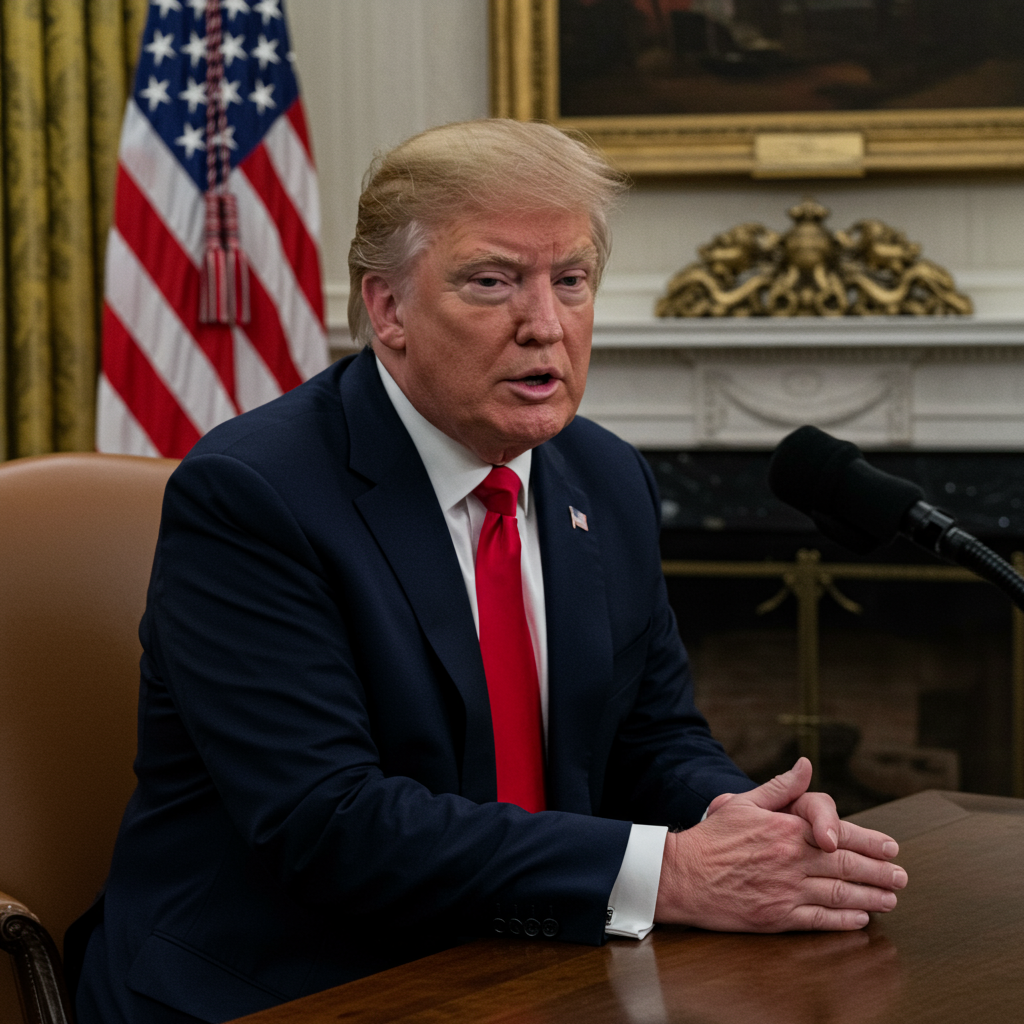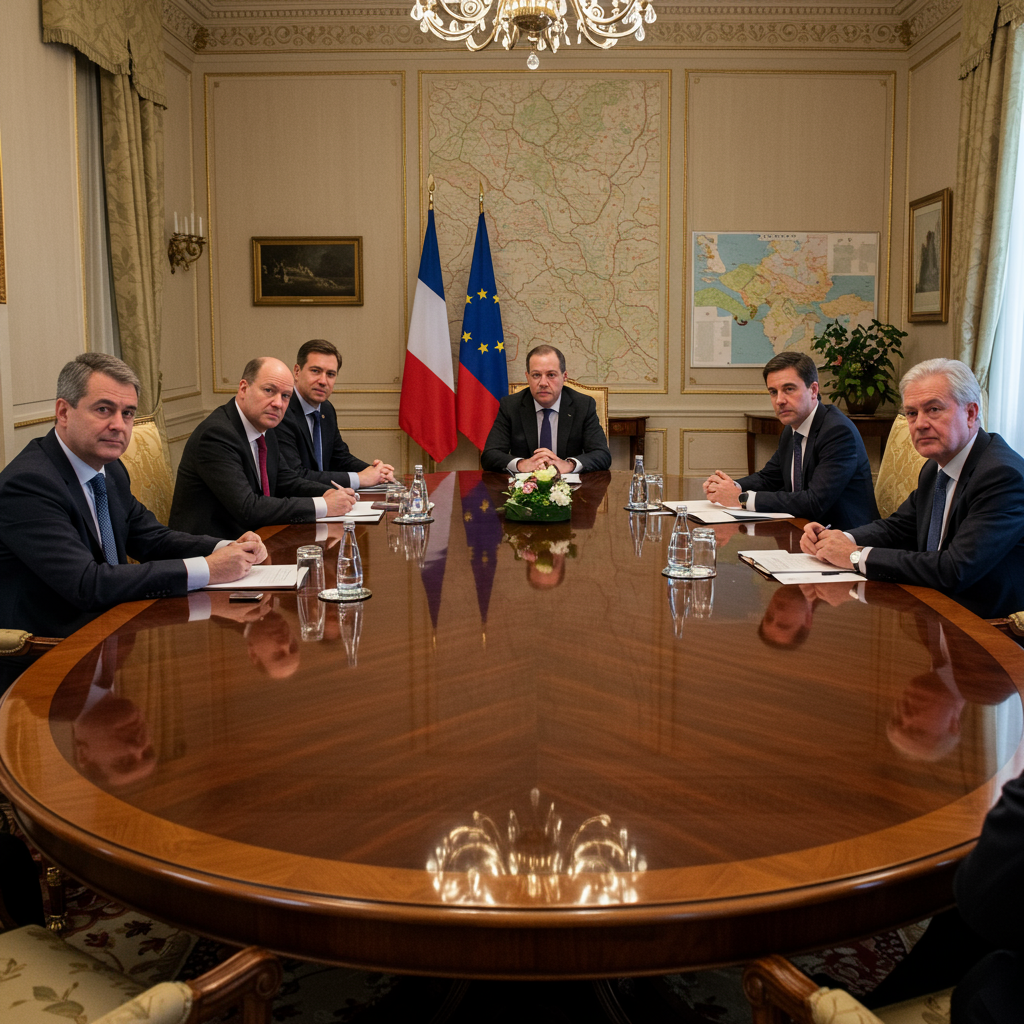The eighth day of escalating tensions between Israel and Iran saw parallel tracks of intense military action and urgent diplomatic maneuvering. European foreign ministers converged in Geneva for crucial talks with their Iranian counterpart, a meeting coordinated with Washington, as President Donald Trump indicated a significant shift in tone, citing a “substantial chance of negotiations” and setting a potential two-week timeline for deciding on possible U.S. military action against Iran’s nuclear program.
This diplomatic push unfolds amidst continued exchanges of fire and rising casualties, fueling fears of a wider regional conflict.
Diplomacy in Geneva Amidst High Stakes
Senior diplomats from Britain, France, and Germany, along with the European Union’s foreign policy chief, met Iran’s Foreign Minister Abbas Araghchi in Geneva. This marked the first direct in-person engagement between Iranian and Western officials since Israel launched its “Operation Rising Lion” attacks on June 13.
European leaders framed the period as a critical “window” for diplomacy, aiming to prevent further escalation. French President Emmanuel Macron stated the Europeans would present a “comprehensive, diplomatic and technical offer” focused on resuming nuclear negotiations, limiting ballistic missiles, and curbing Iran’s support for regional proxy groups. British Foreign Secretary David Lammy underscored the need to halt the violence and stressed that Iran “must never have a nuclear weapon,” aligning the diplomatic window with Trump’s two-week timeframe.
Iran’s delegation, while participating in the talks, maintained that negotiations with the United States are not possible as long as Israeli strikes continue. However, Tehran signaled openness to dialogue with the European counterparts on nuclear and regional issues, though it explicitly ruled out discussions concerning its missile program under the current circumstances.
The diplomatic effort is underscored by European unease regarding the potential for a full-blown war, its destabilizing effects, and economic impacts, including rising energy prices.
Trump’s Shifting Stance and Potential U.S. Involvement
President Trump’s statement marked a notable departure from the more bellicose rhetoric heard earlier in the week. While suggesting openness to negotiation, he is reportedly weighing options for potential U.S. military involvement, including a strike on Iran’s underground Fordo enrichment facility. Fordo is situated deep beneath a mountain, a location believed to be invulnerable to Israeli ordnance, potentially requiring U.S. “bunker buster” capabilities.
In preparation, the U.S. is reportedly repositioning substantial military assets across the Middle East, including thousands of troops, refueling tankers, and warships like the USS Nimitz aircraft carrier, some of which have already assisted Israel in intercepting Iranian missiles.
However, the prospect of unilateral U.S. military action faces domestic opposition. Top Senate Democrats have warned the President against a strike without Congressional authorization. Trump’s assertion that Iran is “very close” to a nuclear weapon also appears to contradict assessments from his own intelligence community.
Ongoing Military Strikes and Rising Casualties
Despite diplomatic efforts, both sides continued trading strikes.
Israel’s military reported carrying out dozens of strikes on Iranian targets overnight and throughout the day Friday. These included alleged military and nuclear-linked sites, such as missile manufacturing facilities in Tehran, a site producing a critical component for nuclear weapons near Tabriz (identified as the headquarters of SPND), and military targets in Kermanshah. Israel’s Defense Minister Israel Katz instructed the military to intensify attacks on facilities and scientists aimed at disrupting Iran’s nuclear program. IDF Chief of Staff Eyal Zamir warned Israelis to prepare for a “prolonged campaign” against Iran, claiming Israel’s “freedom of action is expanding.”
Iran responded with missile and drone barrages targeting southern Israel. An office building at a tech park in Beersheba, which displayed the logo of an Israeli military software and cyberdefense school, was damaged. Other Iranian strikes reportedly hit residential buildings, caused damage near a children’s center, and targeted the Weizmann Institute of Science in Rehovot, destroying a building with numerous labs. Reports also indicated missile strikes in northern Israel, near Haifa Bay, resulting in multiple injuries and property damage near government buildings.
Casualties from the eight days of fighting continue to mount. According to reports, at least 639 people, including civilians, have been killed in Iran, while at least 24 have died in Israel, with hundreds wounded on both sides.
Nuclear Risks and International Warnings
Amidst the strikes, grave warnings were issued concerning the potential impact on Iran’s nuclear facilities. Rafael Grossi, head of the International Atomic Energy Agency (IAEA), specifically highlighted the Bushehr nuclear power plant as the site where a military strike would have the “most serious” consequences. He warned that damage, even just to its power supply, could lead to a reactor core meltdown and release massive radioactivity across the region. Russia’s atomic agency head echoed these concerns about the danger of striking Bushehr but confirmed the plant was currently operating normally with Russian specialists present.
The IAEA also reported that the Khondab heavy water reactor facility was hit by Israeli strikes, but noted that damage was not immediately visible and the site was not operational and contained no nuclear material. Saudi Arabia’s nuclear regulator condemned any military attack on civilian nuclear facilities as a violation of international law.
Iran has stated it will not discuss its nuclear program while under attack.
Broader Regional and Global Reactions
Beyond the direct combatants, the conflict has drawn significant international attention and concern. Russia’s President Vladimir Putin expressed worry about the region plunging into an “abyss of instability and war,” raising fears of a potential World War Three. He reiterated Russia’s offer to mediate and criticized Western nations.
Iran faced a near-total internet blackout, attributed to a cyberattack, which disrupted communications and limited citizen access to information. Meanwhile, Iran’s police claimed to have delivered “heavy blows” to an Israeli “spying network” within the country, including arrests near the Bushehr plant, though these claims could not be independently verified.
Several countries took precautionary steps, including the temporary withdrawal of UK and Swiss diplomatic staff from Tehran due to security concerns, though Switzerland continues its role as a diplomatic intermediary for U.S.-Iran communications. Reports also emerged of Iraqi airspace violations, Afghans fleeing Iran, and disruptions to regional trade routes.
As diplomacy attempts to find a foothold, the ongoing strikes and the looming question of potential U.S. involvement underscore the critical and volatile nature of the current Israel-Iran conflict.



